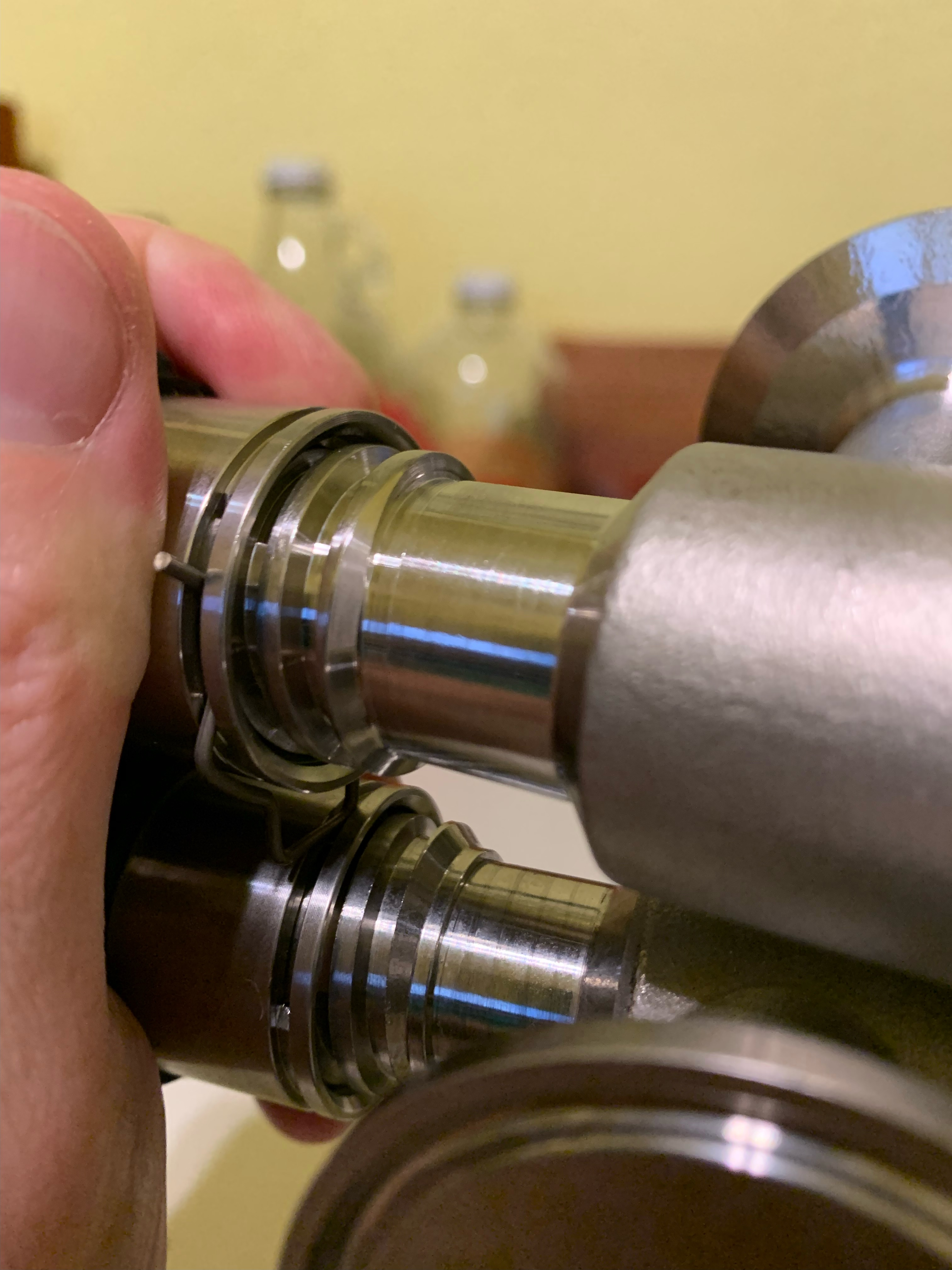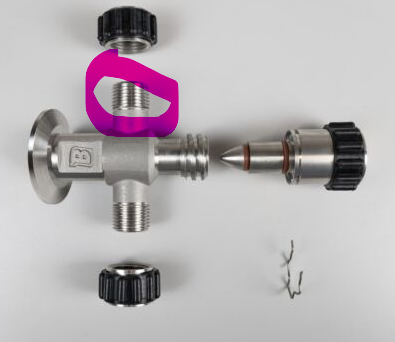dzimm27
Active Member
Working on final flow setup for my eBIAB system and wanted to throw out something interesting. This is of course based on @Bobby_M 's design (and he did the kettle). I'm enamored with running recirculation through my counterflow chiller until I learn my own hard lesson that this is a bad idea. Attached is a pic of the first test run and just to confirm, fittings are all 5/8" and 1/2" tubing. Wort (or test water) exits through a pickup tube and goes to a Riptide pump, then through a Stout counterflow chiller, then up to a tee that splits to the low recirculation port and the high recirculation port (trying this vs through the lid, but have a TC port there as well if it proves necessary). Originally I had a valve placed between the tee and the high recirculation port like in Bobby's design, but I discovered that even wide open, test water would not flow up that hose UNLESS the valve to the low recirc port was partially closed. Once partially closed I start getting flow both to the high and low ports. The restricted flow of the counterflow chiller basically makes where we don't need the second valve leading to the high recirc port, so I removed it.

What I'm wrestling with now (of course before having had the opportunity to do an actual brew on the system and finding out myself - admittedly) is whether or not the total flow restriction is going to be detrimental in any way. Reading up on fluid flow through two possible paths (in this case, high/low recirc ports, even with the extra head of the lift to the high port) will be equal to the input flow, but will be distributed between the two paths based on the restriction of the two paths. So whatever flow rate makes it through the counterflow chiller (ignoring tubing length loss) will make it back to the kettle.
What I could do however is apply that same principle to the counterflow chiller by placing a tee in front of the CF input and output and connecting it like the attached drawing, using only one valve (the dark circle with the little handle sticking out). This would allow an effective "bypass" of the counterflow chiller because when that valve is open, it has the full 1/2" tubing available to flow through and remove any flow loss from the CF chiller. The actual flow based on my understanding of fluid flow through two paths mentioned earlier is that there would still be flow through the CF chiller AND the direct hosing, but given the larger ID, the majority of the flow would be through the "bypass" and the end resultant flow as it exits that last tee should be equal to the input, effectively removing any flow restriction while that valve is open. Then, when chilling is needed, the valve could be closed and flow reduces but 100% of the flow is chilled. Additionally this avoids any need for disconnecting hoses during the mash, boil, chill to whirlpool temp, whirlpool, and final chill to the fermenter.

It had occurred to me that if I put this bypass in, I'll then need to add that valve back in before the upward hose to the top recirc port as the flow rate will increase.
Has anyone done anything like this and have feedback/suggestions? Anything I may be missing here in my scheming? Primary goal here is to avoid moving hoses (and handling hot fittings during a brew) and having spillage. Also, bonus pic of my new 18" x 24" stainless table that I cut down to put it on. Bottom shelf is a little cramped but will work fine.


What I'm wrestling with now (of course before having had the opportunity to do an actual brew on the system and finding out myself - admittedly) is whether or not the total flow restriction is going to be detrimental in any way. Reading up on fluid flow through two possible paths (in this case, high/low recirc ports, even with the extra head of the lift to the high port) will be equal to the input flow, but will be distributed between the two paths based on the restriction of the two paths. So whatever flow rate makes it through the counterflow chiller (ignoring tubing length loss) will make it back to the kettle.
What I could do however is apply that same principle to the counterflow chiller by placing a tee in front of the CF input and output and connecting it like the attached drawing, using only one valve (the dark circle with the little handle sticking out). This would allow an effective "bypass" of the counterflow chiller because when that valve is open, it has the full 1/2" tubing available to flow through and remove any flow loss from the CF chiller. The actual flow based on my understanding of fluid flow through two paths mentioned earlier is that there would still be flow through the CF chiller AND the direct hosing, but given the larger ID, the majority of the flow would be through the "bypass" and the end resultant flow as it exits that last tee should be equal to the input, effectively removing any flow restriction while that valve is open. Then, when chilling is needed, the valve could be closed and flow reduces but 100% of the flow is chilled. Additionally this avoids any need for disconnecting hoses during the mash, boil, chill to whirlpool temp, whirlpool, and final chill to the fermenter.

It had occurred to me that if I put this bypass in, I'll then need to add that valve back in before the upward hose to the top recirc port as the flow rate will increase.
Has anyone done anything like this and have feedback/suggestions? Anything I may be missing here in my scheming? Primary goal here is to avoid moving hoses (and handling hot fittings during a brew) and having spillage. Also, bonus pic of my new 18" x 24" stainless table that I cut down to put it on. Bottom shelf is a little cramped but will work fine.








